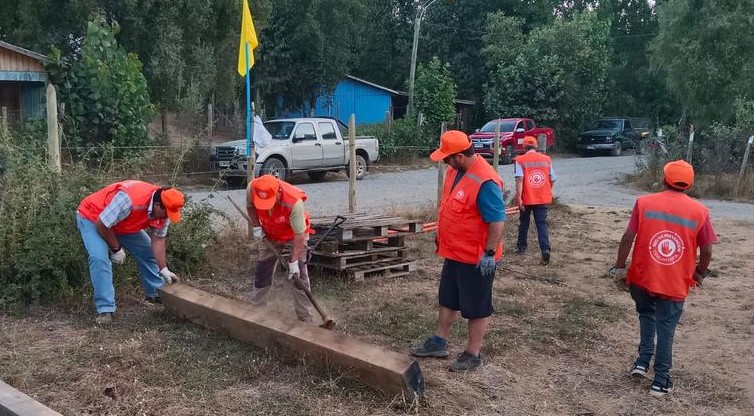Lucía Basso: “There is no sector more qualified than forestry”
-
The president of Uruguay’s society of forestry producers reflected on the current state of the growing sector and the opportunities arising from green finance.
-What can be expected from the forestry sector in 2024?
We expect the sector to continue growing and strengthening, with new investments in the wood processing industry, and for timber construction to gain momentum—a major challenge for the sector and the country. Regarding international markets, we anticipate stabilization, both in terms of price improvements and demand.
On the other hand, it is important to reach agreements on new regulations with the various stakeholders and to communicate to society the economic and environmental contributions of our sector, demonstrating its long-term sustainability. Just consider that with only 6% of the country’s productive area forested, we are the leading export sector, contributing 6% of GDP.
-Do you believe the forested area will continue to expand?
I believe so, as industrial growth will require greater supply. This increased demand will be met in two main ways: through genetic improvement and by expanding the planted area. There are still 3 million hectares available for planting. How much will the area grow? It’s hard to give an exact figure, but I’d estimate around 15,000 hectares per year.
-Pulp was Uruguay’s second most exported product in 2023, and with the inauguration of UPM 11, the country became one of the world’s leading producers. How did we achieve this status?
-Through a Forestry Law that demonstrated tremendous foresight and excellent planning, combined with consistent state policies maintained across all governments. Additionally, Uruguay’s legal security and stability made it attractive for both local and foreign investors to invest in the forestry sector. This led to a critical mass of 1 million hectares, planted at a rate of 60,000 to 70,000 hectares per year, while simultaneously planning and studying the possibility of industries like UPM and Montes del Plata (formerly Botnia and Ence) building their plants. It was a well-orchestrated process—while raw materials were planted and grown, the industry was planned and constructed.
-The sector no longer needs tax incentives to attract investment. Does this speak to its maturity?
-Absolutely. The sector has long operated without fiscal incentives and has continued to grow. The purpose of these incentives was to promote sector development—that was clear from the beginning. The sector is profitable on its own. While tax exemptions (now mostly phased out) helped or incentivized growth, the sector’s inherent profitability is evident across all production objectives, from timber for processing to pulp production and, to a lesser extent, energy (firewood).
-Is the challenge now to find ways to add more value to timber production?
-That has been a process. It began with log exports, followed by wood chips, then pulp plants, and now we’re seeing strong growth in the wood processing industry (which existed in Uruguay but on a small scale), with new industries emerging every year, along with the promotion of timber housing. Adding value is always a challenge, but we’re on the right track. This is complemented by non-timber forest products like carbon credits, green hydrogen, honey production, and others.
-What is the level of research in Uruguay regarding this sector?
-There is a high level of research. Through the Society of Forestry Producers (SPF), the Forestry Consortium coordinates projects involving INIA, LATU, and forestry companies. While not every topic is covered, most—especially those in demand by both producers and civil society—are addressed, including forest protection, sustainability, forest management, growth modeling, genetic improvement, wood technology, and more. Additionally, forestry companies conduct their own R&D, particularly in genetic improvement, hybridization, and cloning.
-Regarding training, does the sector struggle to hire properly qualified personnel?
-I believe there is no sector in the country with a higher level of workforce training than forestry. We have been and continue to be an example for other sectors. Training spans the entire forestry chain, both within companies and among contractors. Today, many contracting firms are certified under standards like ISO, OHSAS, or other management and safety norms. This is largely due to forest certification processes (mainly FSC), which have been fully internalized by the sector. No one works under poor conditions—safety equipment is mandatory, untrained workers are not assigned tasks, and occupational health is prioritized. Generally, finding skilled personnel or contractors is not an issue.
-Is sustainability a key element for all companies in the sector? Is this an aspect widely recognized and valued in forestry?
-Absolutely. In the late 90s, we had the first FSC-certified forestry company (an internationally recognized certification body). This was in the 90s, when environmental and sustainability issues weren’t part of daily life or production in any sector—yet forestry was a pioneer. Sustainability encompasses not just the environment but also people and natural resources. The sector prioritizes soil, water, biodiversity, flora, and fauna. Beyond voluntary certification, forestry plantations require not only a project approved by the General Forestry Directorate but also an environmental permit from the Ministry of Environment, as well as compliance with local regulations, which vary by region.
-Is carbon credit trading an example of diversification in the sector’s products?
-Undoubtedly, it’s another forest product. It’s a major asset for Uruguay. International carbon credit markets have grown in recent years, and Uruguay already has successful projects participating in them. The potential for green finance is enormous, and Uruguayan export products with positive net emissions can synergize with carbon sequestration activities, positioning the country in demanding markets with carbon-neutral products from a fully sustainable nation.
Source:www.elobservador.com.uy

















